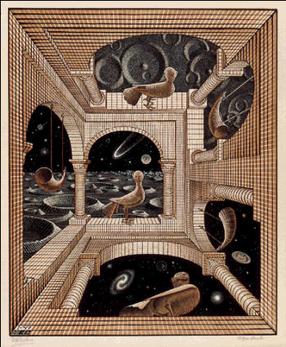"Just as there is no longer a clear distinction between the original and the copy, the difference between art and culture has also become highly nebulous." (Page 41)In a previous post, //Frame That Spam, I described a "cloud" artform that was derived entirely from the collective data of humanity. It was shocking to see this same ideology present itself in a piece written several years prior was, if nothing else, a potential inspiration for artists of the 21st century to start operating in similar ways to the programmers or the architects.
"What is particularly – and literally – pathetic about this, since I have just referred to it as a pathos-infused, humanist aesthetics, is the fact that it no longer sees art's pursuit of transcendence in dialectical tension with the quest for knowledge, understanding, and the improvement of our contemporary condition." (Page 43)This statement, I feel, is a massively pessimistic view of the transformation of art, possibly even more degrading, ultimately, than the concept it aims to prove. Instead of attempting to define beauty as an accessible form or message, the author seems to be reserving the interpretation to an elite and exclusive educated group who can more adequately or perhaps even with a pompous idea of correctness in beauty. The reality of this circumstance is such that art becomes inaccessible to the masses, the group that, more often than not, has a better idea of culture's definition of beauty.
"Another level of the problematic comes into view when we consider that we have no reached and age in which it is possible to synthetically produce flawless harmony, perfection, and wholeness." (Page 40)Again, the author seems to be fending off an advance in art in favor of returning to a style defined and embraced centuries ago. When a culture (or world as a whole) has a revelation in the definition of beauty in art, it seems as though it would be the people's duty to embrace it and celebrate originality. Much of the cutting edge design and art does separate itself from traditional concepts, but simultaneously ushers in a universally appealing age of expression.
Simian Mobile Disco - Sleep Deprivation (12" Version)






